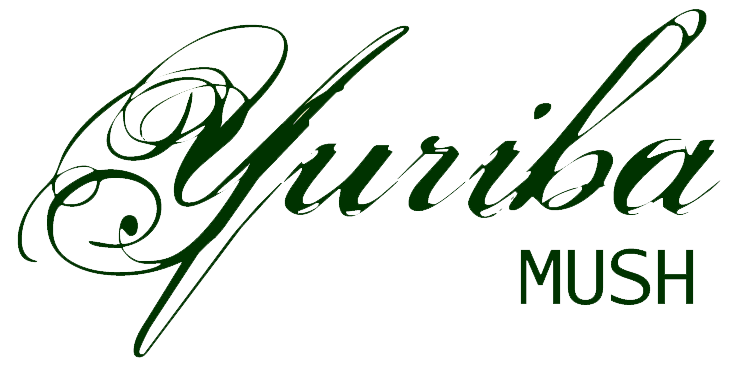Old Yuriban
Old Yuriban is a writing system which dates back to the Ancient Era of Yuriba. It was originally an ideographic script for use in writing Liliaceous A. This was itself eventually adapted to the languages of both the Fae and Kitsune populaces of Underhill, by whom it is still used in certain religious contexts. Old Yuriban has also been further adapted by enthusiasts to write such diverse languages as Japanese, Draconic, and English. Its singular primary modern use is in what is referred to as Hieratic Yuriban, the centralized dialect of the various native subtongues used in record-keeping and religious ceremonies.
Formally, Old Yuriban is a syllabic alphabet: the basic glyph representing any consonant has a as an inherent vowel, and various diacritic glyphs may be added around this consonant to change this vowel (including one, a dot below, to remove it). Some consonant clusters have their own glyph, which is usually (but not always) a modification of the individual consonants; additionally, some diacritic glyphs can join with their consonants. The whole is strongly reminiscent of the various scripts descended from the Brahmi alphabet (especially Tamil and Malayalam, due to the very curvilinear nature of the script).
Unlike most alphabetic scripts, Old Yuriban also uses a number of ideoglyphs, known as onomatoglyphs -- glyphs representing certain names, mostly of beings or places from Yuriban mythology. Most of these glyphs appear to derive from potential foreign influences, but several are unique to Yuriba. All onomatoglyphs represent unique entities: for example, there exist onomatoglyphs both for Engetsu and Akibimi, but there is no glyph meaning simply 'moon' or 'mountain'. The same glyphs are typically used to represent these names regardless of the language being written. In some languages, the name represented by an onomatoglyph may be partially phonetically written after the glyph, in order to show how the word inflects for case.
Old Yuriban is read horizontally, from left to right, then from top to bottom. When written vertically (as on an obelisk, or on the spine of a book) it is always turned 90 degrees counterclockwise, to be read from ground to sky. It is largely written without punctuation, except for a word separator (a centered dot) and a sentence separator (a 'plus sign', often elaborated to a small four pointed star in carvings).
